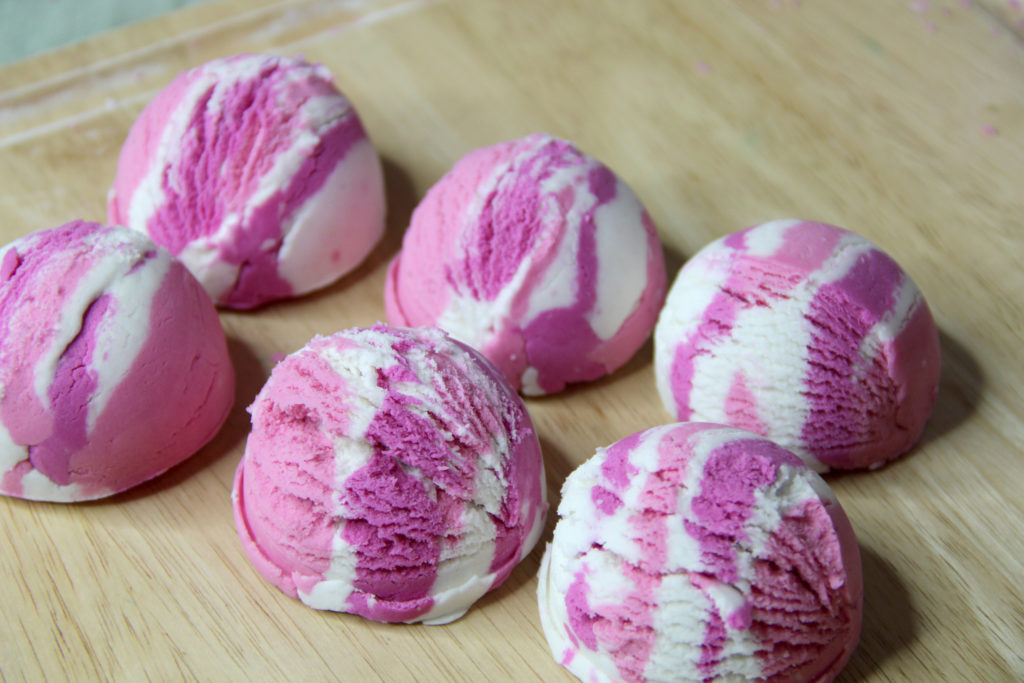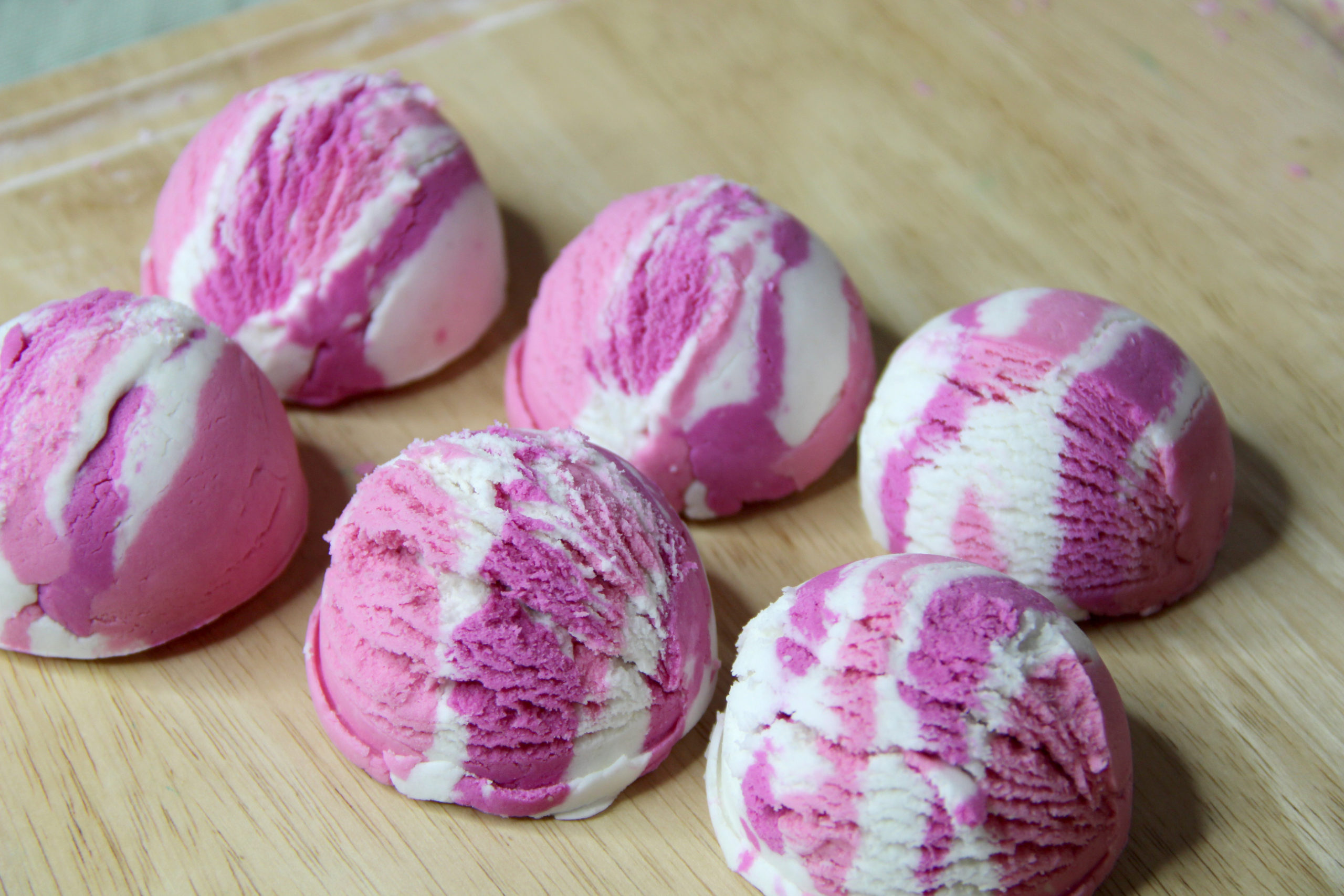SLSa is a synthetic surfactant used in bubble bars, bath bombs and other bath products to create foam (bubble bath!). It is manufactured by Stepan. It has a large particle size that doesn’t penetrate the skin or mucous membranes, so it typically doesn’t cause skin irritations. It has excellent foaming abilities; a little goes a long way in product formulation.

It is recommended to wear safety goggles, dust mask and gloves when working with SLSa in it’s raw form. Once it is mixed into product and can’t become airborne, it is safe to handle and use.
It comes in three different forms, and all three might act differently in a formula.
Fine (Powder) SLSa – Fine SLSa is just that, a very fine granule, somewhere between powdered sugar and a fine salt granule. It can become airborne easily and can be breathed in. If you use it, you must where a mask and reduce air or fans that might kick it up. Cover your bowl with a large towel when mixing. Link to Stepan info.
Coarse SLSa – Coarse SLSa has a granule size similar to salt. It can still become a bit airborne, but certainly not as much as fine SLSa. Link to Stepan info.
Flake SLSa – I haven’t really come across flake SLSa and I don’t see many DIY formulations with it. Many suppliers don’t even sell it. But I want you to be aware that there is a flake form in case you come across it. Link to Stepan info.
So, let’s just talk about fine versus coarse. First of all, I’d like to mention that coarse, isn’t really what we’d think of coarse. Coarse SLSa is still pretty fine and looks like a powder to some. So, be aware that when purchasing from some suppliers, they might have their SLSa labeled wrong (coarse labeled as fine) or might not even realize there is a difference. I’ve found some suppliers on Amazon to not even know which version they are selling. They simply state that it looks like a powder. Both look a little like a powder, especially if you don’t have both sitting right in front of you to compare. Purchase from a supplier that knows the difference. I’ll list some below.
Which you use is simply a matter of preference. During my testing of both, I found that fine SLSa made bubble bars that more easily hardened, were super smooth and easily dissolved in the tub. I had many issues with bubble bars staying soft or even reacting when I used coarse. Because of the different surface area of each type, you’ll need to adjust your liquid amount based on the type you want to use.
All of the recipes in my book, (affiliate link) Fun in the Tub: Creating Bath Bombs, Solid Bubble Bath, Bubble Frosting and Bubble Scoops are formulated to use fine SLSa. If you decide to use coarse SLSa, you might have some issues. If you make any of the solid bubble bath or bubble frosting recipes using coarse SLSa you’ll end up with soft and sticky bubble bars that might take forever to dry.
To modify a solid bubble bath, bubble scoop or bubble frosting recipe to use coarse SLSa, simply use half the liquid amount and then add a tiny bit at a time until you reach the correct consistency.
Here are some suppliers for each type of SLSa.
- Fine (Powder) SLSa – Make Your Own*, Bramble Berry, Rustic Escentuals
- Coarse SLSa – Make Your Own, Ingredients to Die For, Chemical Store, Wholesale Supplies Plus
- Bulk Apothecary sells it, but they list it as powder/flake…so not sure which one it is.
*Make Your Own is the same company as Save on Citric.
If the company that you want to buy it from doesn’t specify which type it is, send them the Stepan links and ask which it is.
This topic comes up quite a bit in our group, Bath Fizz and Foam, so I wanted to explain the difference a bit and what I use in my formulas. 🙂


i don’t have much knowledge about SLSa. But, your post helps me a lot for understand the whole topic. Thank you!
Extremely helpful, as usual, thank you!
Thanks for the informative publication! I love your recipes!